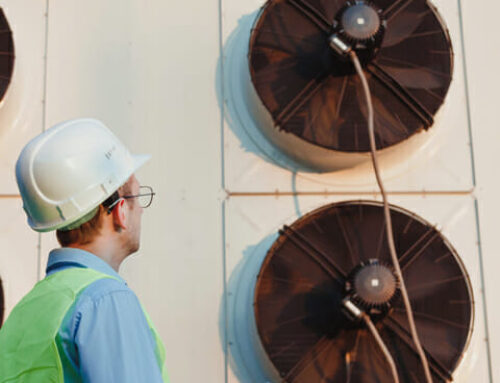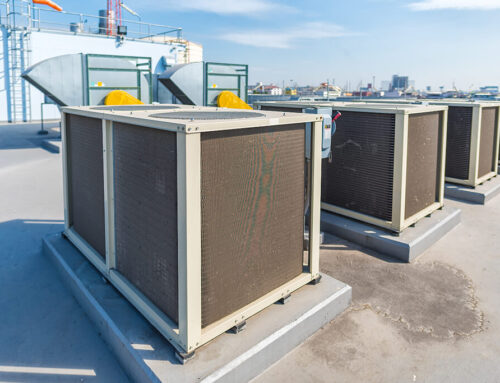Cooling tower water treatment isn’t just another item on your maintenance checklist; it’s the unsung hero in protecting and optimizing your system, ensuring heat exchange efficiency through filtration systems and acting as a corrosion inhibitor for heat exchangers. While untreated water can wreak havoc, causing scaling and corrosion, a robust treatment plan with chemical treatments and filtration systems ensures efficiency, longevity, and removal of contaminants. Dive into the world of clean circuits where smart chemistry meets industrial might, integrating corrosion inhibitor technologies and products, transforming potential disasters caused by contaminants into seamless operations.
In an era where operational costs are skyrocketing, cutting corners on your cooling system’s heat exchange efficiency could cost tower operators more than you bargained for, especially if it uses much water for circulation. Let’s explore how treating your cooling tower water with a treatment process, designed to control corrosion rates through ion exchange, is less about expenditure and more about investment in performance stability.
Cooling Tower Functionality and Operation
Heat Extraction
Cooling towers are vital in removing heat from water. They use evaporation to cool down the water. As warm water flows through the tower, some of it evaporates into the air. This evaporation process pulls heat out of the remaining water.
The efficiency of this system relies heavily on maintaining a constant flow of air. Tower operators manage this airflow to optimize performance. The right control balance ensures that as much hot water as possible is cooled during each cycle, minimizing corrosion rates.
Air Flow Role
Air flow plays a crucial role in the control of cooling tower functionality during the water treatment process. It helps control by moving the warmer air away from the water, allowing cooler air to take its place. Good airflow can increase how effectively a tower cools.
Operators must monitor and adjust fans or other mechanisms that control airflow within the tower structure. If not managed well, poor air circulation can lead to less efficient cooling and higher energy costs.
Water Temperature Impact
The temperature of incoming water affects cooling tower operation and control too. If the incoming water is too hot, it might not cool sufficiently before being recirculated back into use with proper control.
To maintain optimal conditions inside a cooling tower, sensors often track both air and water temperatures at different levels within the structure – especially near the top where heat exchange occurs most intensely.
Importance of Effective Water Treatment in Cooling Systems
Scale Prevention
Proper water treatment is vital for preventing scale. Scale can reduce heat exchange efficiency, leading to higher energy costs and necessitating water treatment. A good water treatment process ensures that minerals do not accumulate on equipment surfaces.
Scale forms when mineral deposits from the feed water stick to system parts. This buildup acts like insulation, hindering heat transfer. Regular maintenance and proper treatment keep scale at bay.
Corrosion Control
Another key aspect is corrosion control. Without it, metal parts deteriorate faster due to chemical reactions with substances in the water. Quality treatments protect these components by stabilizing pH levels and adding inhibitors.
Corroded systems leak and fail prematurely, causing unexpected downtimes. Properly treated circulation water extends the life of cooling systems significantly.
Pathogen Reduction
Reducing pathogens is crucial for safety reasons. Untreated or poorly treated water can harbor harmful microorganisms like Legionella bacteria which pose health risks.
Waterborne pathogens thrive in warm environments found within cooling towers. By controlling microbial growth through effective treatments, we ensure a safer working environment around these systems.
Key Principles of Cooling Tower Water Treatment
pH Balance
Maintaining the pH levels in a cooling tower is crucial for effective water treatment. Too high or too low pH can harm equipment and processes in water treatment. Operators must regularly check water’s acidity or alkalinity. This ensures optimal performance.
Balanced pH prevents corrosion and microbial growth. For instance, a neutral pH in water treatment reduces the risk of metal parts deteriorating quickly.
Mineral Control
Cooling towers need controlled mineral concentration. Minerals cause scaling on components if left unchecked. Scaling reduces heat exchange efficiency and may lead to costly repairs without proper water treatment.
To prevent this, water treatment programs focus on minimizing calcium, magnesium, and silica deposits through various chemical additives.
Quality Monitoring
Routine testing of water quality is essential for effective cooling tower operation. It detects imbalances early in water treatment, preventing larger issues down the line.
Monitoring includes checking for contaminants that could lead to fouling or biological growths like algae or bacteria within the system.
Chemical Treatment Strategies for Cooling Towers
Microbial Control
Biocides play a crucial role in cooling tower water treatment. They kill harmful microorganisms that can cause disease and biofilm formation. Without biocides, bacteria like Legionella could grow unchecked.
Using the right biocide is important. Some target specific organisms while others are broad-spectrum. It’s essential to choose one that won’t harm the system or environment.
Corrosion Prevention
Corrosion inhibitors extend the life of metal components in cooling towers. These chemicals form a protective barrier on metals, preventing rust and wear.
Different types of corrosion inhibitors exist, such as phosphates and silicates. The choice depends on the system’s materials and water chemistry.
Scale Inhibition
Scale inhibitors prevent minerals from depositing on surfaces within cooling towers. Deposits can reduce efficiency and lead to damage.
These chemicals work by disrupting mineral crystal growth, keeping them soluble in water. This helps maintain optimal heat transfer rates and prevents blockages.
Biological Fouling Prevention and Legionella Control
Health Regulations
To prevent biological fouling, it’s vital to follow health regulations. These rules help keep Legionella risks low. Companies must know local laws on water safety.
Regular tests for bacteria are a must. They ensure cooling towers don’t become breeding grounds for harmful microbes. When levels get high, action is needed fast.
Cleaning Protocols
Routine cleaning stops biofilm build-up in its tracks. Biofilms are layers of microorganisms that stick to surfaces, including those inside cooling towers.
Cleaning should happen often using the right methods and tools. This keeps organic matter from causing blockages or corrosion.
Dosing Systems
Continuous dosing systems keep water safe by adding chemicals non-stop. These include biocides and other substances that fight off microbiological growth.
The systems adjust doses based on real-time data like pH levels or contaminant amounts. This ensures the right amount of chemical is always used, preventing waste and overexposure.
-
Biocides kill bacteria before they can form harmful colonies.
-
Inhibitors stop minerals from sticking to tower parts, reducing fouling risk.
Scaling, Corrosion, and Deposit Management Techniques
Filtration Systems
Employing side-stream filtration is crucial for removing particulates. This method filters a portion of the cooling water on a continuous basis. It helps in maintaining clarity and reducing the load of damaging impurities.
Particles can cause scaling and foster environments conducive to corrosion. Side-stream filtration effectively reduces these risks by keeping the water clean. It extends equipment life and maintains efficiency.
Conductivity Control
Using conductivity controllers optimizes blowdown procedures. These devices measure the concentration of dissolved solids in water. They help maintain proper control parameters.
Blowdown is essential to prevent scale buildup from hardness minerals like calcium and magnesium. By managing discharge rates, systems avoid excessive water usage while meeting regulatory requirements.
Chemical Treatment
Selecting appropriate chemical dispersants prevents deposit formation. Dispersants work by breaking up clusters of minerals that could settle as deposits or scale within the system.
Chemical treatment often includes using corrosion inhibitors, which protect materials like mild steel against galvanic reactions or leaks due to corrosion rates exceeding acceptable thresholds. Scale inhibitors are also employed to combat growth due to high mineral concentrations.
Advanced Water Treatment Technologies for Cooling Towers
UV Light Treatment
Ultraviolet light treatments offer a chemical-free method to kill bacteria. These systems expose water to UV rays, disrupting the DNA of microorganisms. This prevents them from reproducing and eliminates biological growth.
UV treatment has several benefits:
-
It’s effective against a wide range of pathogens.
-
There is no risk of overdosing.
-
The process does not create harmful byproducts.
This technology enhances tower water treatment by maintaining cleaner systems. Clean systems mean better performance and longer lifespan for heat exchangers and other equipment.
Reverse Osmosis
Reverse osmosis plays a crucial role in reducing dissolved solids. It works by forcing water through a semi-permeable membrane, which traps contaminants like salts and minerals. This results in purer water with fewer impurities.
The advantages are clear:
-
Extends the life of equipment by preventing scale buildup.
-
Improves efficiency as less energy is needed to heat or cool cleaner water.
By integrating reverse osmosis, cooling towers can operate more efficiently, saving on maintenance costs over time.
Automated Systems
Automated chemical feed systems ensure precise dosing of treatment chemicals. They adjust the amount based on real-time data about the water quality, which means you use only what’s necessary – no more, no less.
Benefits include:
-
Minimized chemical usage reduces environmental impact.
-
Better control over system conditions leads to consistent operation.
These systems work alongside filtration technologies such as ultrafiltration to remove particles before they form foam or deposits within the tower structure.
Case Studies Highlighting Successful Water Treatment Applications
Improved Performance
Cooling towers are crucial in many industries. They regulate heat by using water. But, untreated water can cause issues like scaling and corrosion. These problems hurt a system’s efficiency.
One example is a manufacturing plant in Ohio. The plant struggled with scale buildup, which reduced their cooling tower’s effectiveness. After implementing a new water treatment plan, the performance improved significantly. The treated water prevented mineral deposits, ensuring smooth operations.
The difference was clear: equipment lasted longer and required fewer repairs.
Cost Savings
Effective water treatment doesn’t just enhance performance; it also saves money over time.
A commercial building in Texas used city water for its cooling process. This led to high costs due to the volume of makeup water needed. By optimizing their treatment strategy, they cut down on how much water was wasted.
This change resulted in annual savings of thousands of dollars for the business.
Environmental Impact
Optimizing water usage has environmental benefits as well.
Consider an office complex that upgraded its cooling tower system with advanced treatments aimed at reducing discharge volumes and chemical use.
The result was twofold: less strain on local water resources and decreased pollution from wastewater runoff.
Summary
Water treatment in cooling towers is like a tightrope walk—balance is key. You’ve seen how keeping that balance prevents a myriad of issues, from scale buildup to Legionella outbreaks. It’s not just about adding chemicals; it’s about understanding the harmony between biology, chemistry, and physics to keep your system running smoothly. You’re now armed with knowledge on the most effective strategies and cutting-edge technologies that ensure your cooling tower doesn’t become a money pit or a health hazard.
So what’s next for you? Take action. Review your current water treatment plan and see where you can integrate these insights for a more efficient, safer cooling tower operation. Don’t wait for the warning signs—be proactive. And if you’re ever in doubt, reach out to experts who eat, sleep, and breathe this stuff. They’ll help you hit the high notes of cooling tower water treatment without missing a beat.






